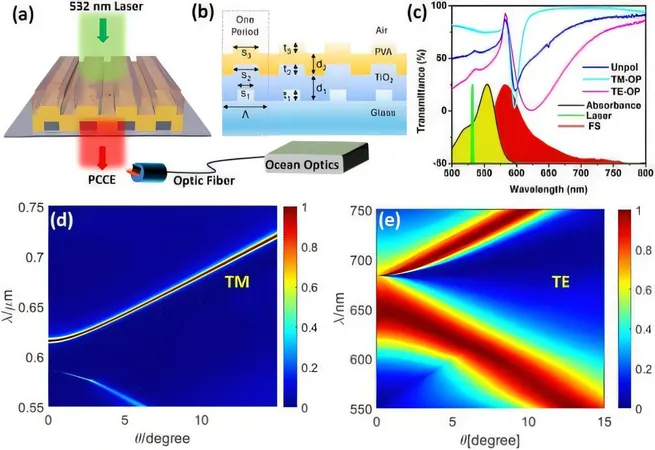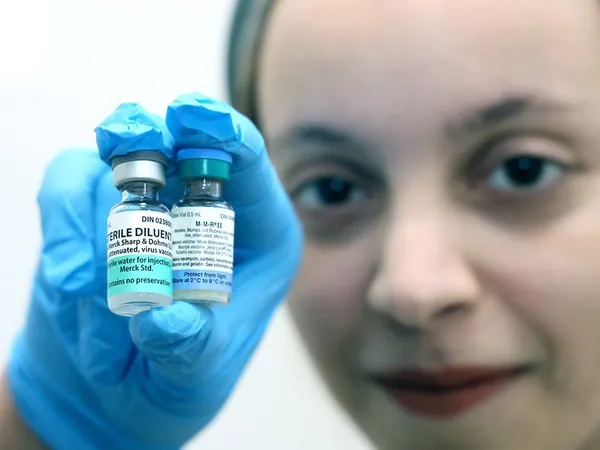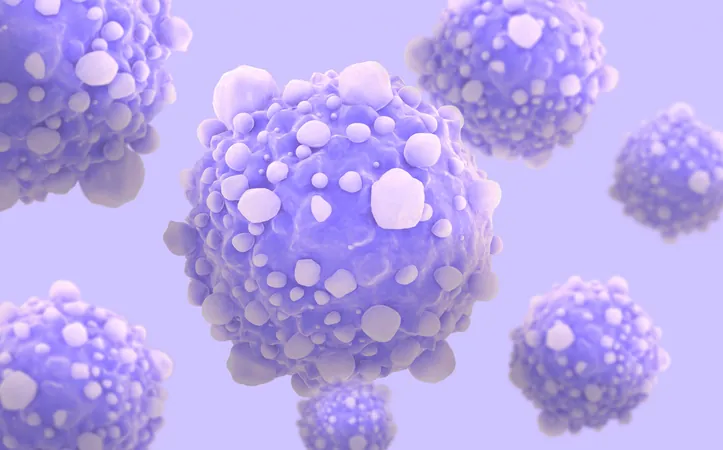
Revolutionizing Biosensing: How Nanoscale Light Manipulation Could Change Medical Diagnostics
2025-07-01
Author: Jacob
From Lab to Patient: The Future of Diagnostics
Imagine a world where medical tests are swift, affordable, and conducted right at the point of care. Researchers at the Carl R. Woese Institute for Genomic Biology are making strides toward this vision by enhancing biosensors for the early detection of disease biomarkers.
The Magic of Peacock Feathers and Photonic Crystals
Have you ever marveled at the stunning, iridescent colors of peacock feathers? This captivating display isn't due to pigments; rather, it's nature's own design: intricate nanoscopic structures known as photonic crystals. These crystals manipulate light in stunning ways and have inspired scientists to revolutionize biosensing technologies.
Boosting Detection with Nanoengineering
At the University of Illinois Urbana-Champaign, Professor Brian Cunningham and his team have pioneered photonic crystal-based biosensors using gold nanoparticles to amplify fluorescence. While this technology has made groundbreaking advancements in detecting biomarker molecules, it has faced challenges—especially a phenomenon known as 'quenching,' which can diminish fluorescence signals.
Breaking Through the Dead Zone
In a recent study published in the MRS Bulletin, researchers introduced a game-changing solution: cryosoret nanoassemblies. These structures, formed through rapid cryogenic freezing, leverage the power of collective organization—realizing the potential that individual nanoparticles couldn't achieve alone. This innovation led to a staggering 200-fold enhancement in fluorescence signals!
Towards Intelligent Biosensing
But the team's ambitions don't stop there. They are now exploring how to incorporate magnetic tunability into these nanoassemblies, aiming to develop smart, responsive biosensors. While many biosensors primarily leverage the electric components of light, the integration of the magnetic component remains largely untapped.
Harnessing Both Electric and Magnetic Light Components
In another groundbreaking study reported in APL Materials, Bhaskar and his colleagues unveiled magneto-plasmonic cryosoret nanoassemblies. These innovative structures demonstrated the ability to harness both electric and magnetic components of light, achieving ultra-sensitive detection at attomolar levels without succumbing to quenching.
The Future of Medical Diagnostics Is Bright
"This work represents a hybrid optical platform where photons are orchestrated, not just emitted," explained Cunningham. This synthesis of advanced simulations, nanofabrication, and chemical engineering is poised to reshape medical diagnostics for the better.
Aiming for Specificity in Biomarker Detection
Looking ahead, the researchers are keen to refine these cryosoret nanoassemblies to target specific biomarkers, such as microRNAs and circulating tumor DNA, paving the way for early detection of cancer and infectious diseases. Their ultimate goal? To equip point-of-care diagnostics with the sensitivity and accessibility needed in today's fast-paced medical landscape.









 Brasil (PT)
Brasil (PT)
 Canada (EN)
Canada (EN)
 Chile (ES)
Chile (ES)
 Česko (CS)
Česko (CS)
 대한민국 (KO)
대한민국 (KO)
 España (ES)
España (ES)
 France (FR)
France (FR)
 Hong Kong (EN)
Hong Kong (EN)
 Italia (IT)
Italia (IT)
 日本 (JA)
日本 (JA)
 Magyarország (HU)
Magyarország (HU)
 Norge (NO)
Norge (NO)
 Polska (PL)
Polska (PL)
 Schweiz (DE)
Schweiz (DE)
 Singapore (EN)
Singapore (EN)
 Sverige (SV)
Sverige (SV)
 Suomi (FI)
Suomi (FI)
 Türkiye (TR)
Türkiye (TR)
 الإمارات العربية المتحدة (AR)
الإمارات العربية المتحدة (AR)